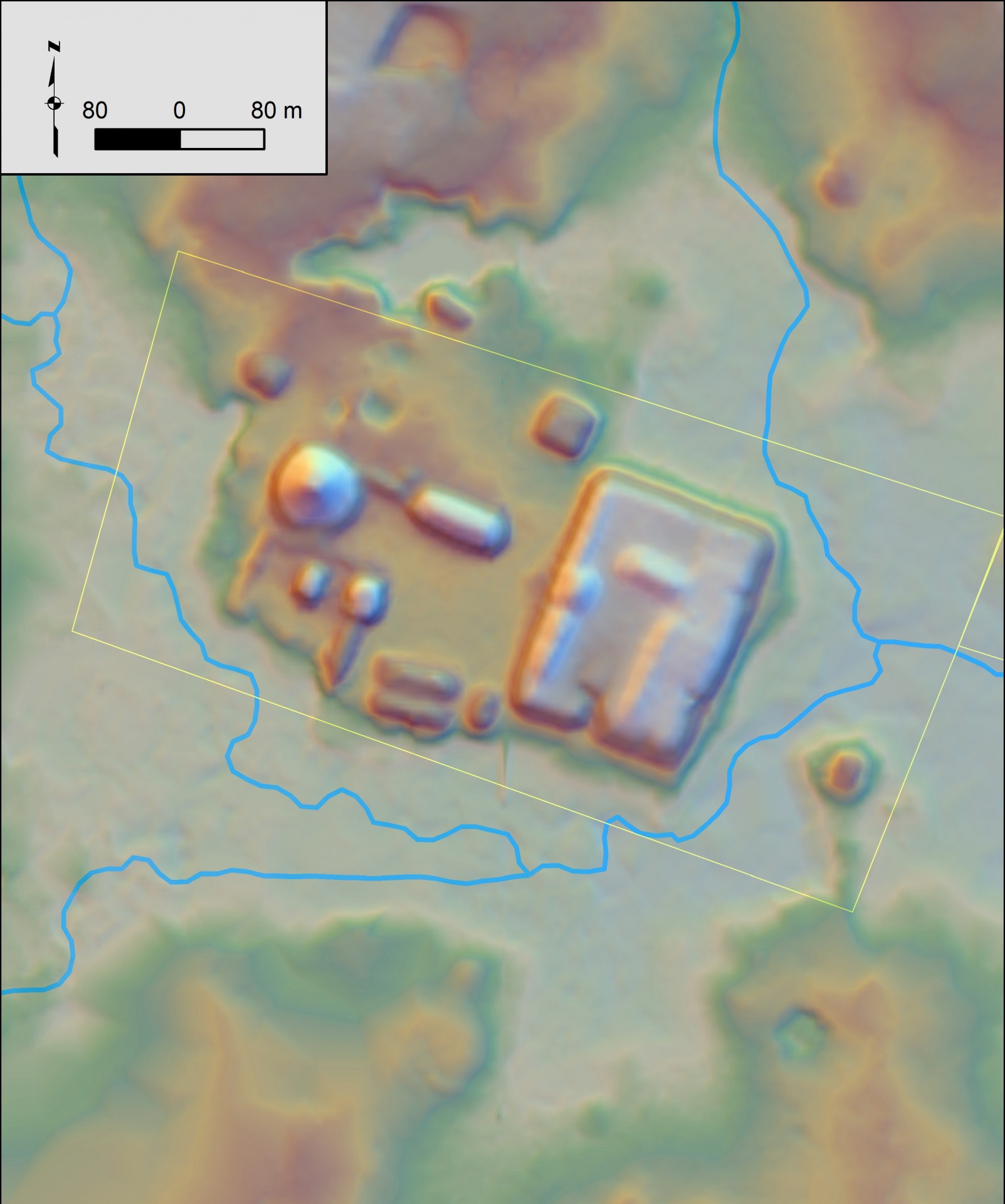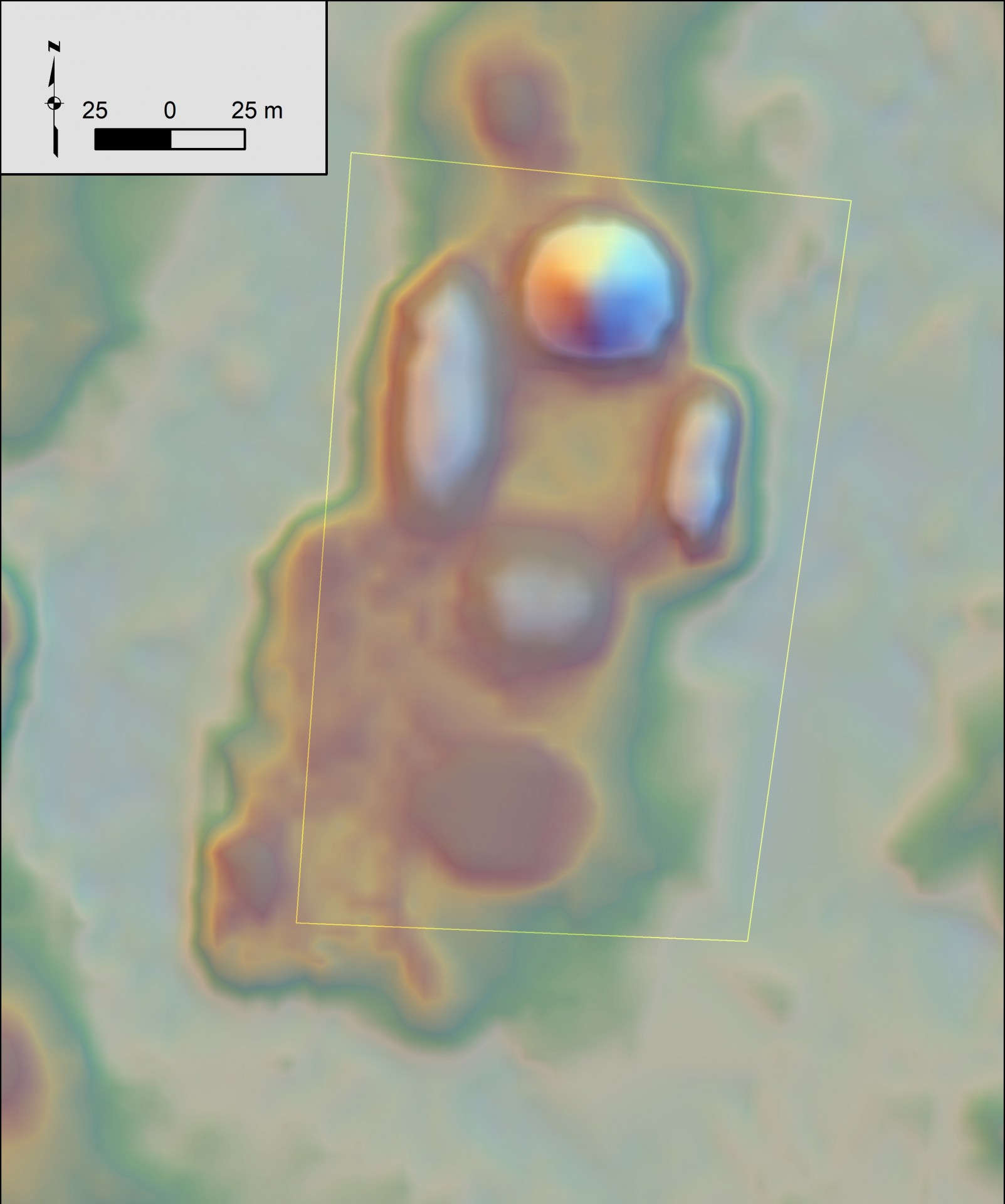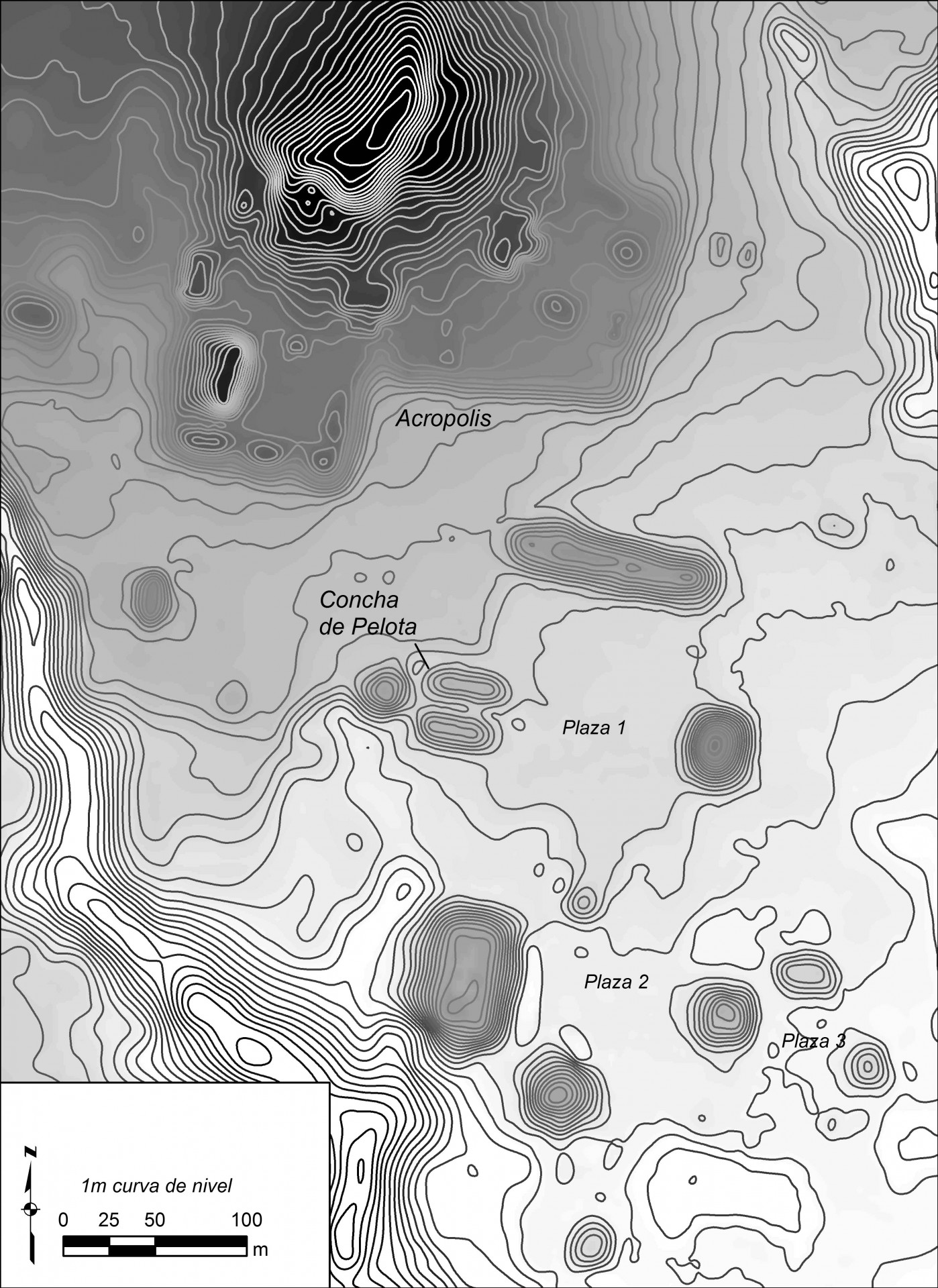Gulf Coast Architectural Project
The Gulf lowlands present us with an archaeological gift. The Mexican geographic society, INEGI, has made available 5-m resolution LiDAR elevation data that is suitable for identifying mounded architecture in this largely deforested region. Even outside areas that have been surveyed archaeologically, this DEM gives us the ability to document most monumental architecture from central to southern Veracruz.
The earthen architectural complex to the right is Nopiloa, surveyed on the ground by Barbara Stark. This complex is fully mapped using the INEGI LiDAR data, but not all architectural complexes in the region appear so clearly in the open-sourced data.
Stoner has used these data to identify over 1100 formal architectural complexes (or plaza groups) and counting for this region. These are nodes of political and ritual power that focus the authority of Classic period (AD 300-850) elites at easily-identified points on the landscape. Additionally, the LiDAR data are also sufficient to identify thousands of residential mounds in the wetlands, which are situated within the agricultural fields in many cases.
The image to the left is an example of a plaza group with a tall conical mound on the northern end, long mounds enclosing the plaza on both sides, and additional platforms on the southern end. These were the centers of ritual and political life for ancient Veracruzanos.
These open-sourced data put us in the enviable situation of being able to identify households, nodes of authority, and agricultural fields all before stepping into the field! Currently we are identifying all formal architectural complexes for central and southern Veracruz and recording variables such as height of mounds; length, width, orientation, and configuration of plaza groups; length, width, and configuration of ball courts; and more. In the end, we will search for patterned variability across space in an effort to identify the relationships among clusters of settlement in the region, including social boundaries among them.


